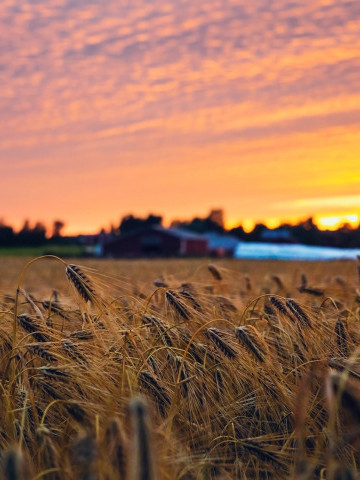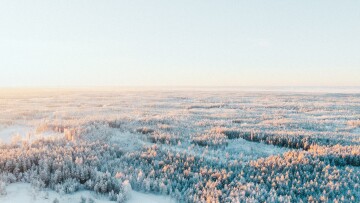
Bioekonomi
I bloggen Bioekonomi får du veta mer om Yrkeshögskolan Novias forsknings-, utvecklings- och innovationsverksamhet inom forskningsområdet systemomställning för att bygga resiliens. Majoriteten av personalen finns huvudsakligen i Raseborg. Här bildar forskare, projektarbetare, lärare, studerande och administrativ personal en dynamisk helhet. På vår blogg kan du läsa om vilka vi är, vad vi gör och om våra resultat. Välkommen!
Vid frågor eller feedback kontakta bloggens administratör Heidi Barman-Geust (Heidi.barman-geust(a)novia.fi)
Vi följer CC BY 4.0 om inget annat nämns.
Systemic Transformation to Build Resilience is one of Novia University of Applied Sciences six' research areas. The activity is mostly located in Raseborg, in southern Finland. As a dynamic unity, our researchers, project workers, teachers, students and administrative personnel produce versatile results in research, development and innovation. We blog about who we are, what we do, what our conclusions are, and how we implement them. Welcome!
If you have questions, please contact Heidi Barman (Heidi.barman-geust(a)novia.fi)
We folllow CC BY 4.0 if nothing else is stated.
Agroforestry in places with many trees

Over the last year and a half I have had the opportunity to meet many people and speak to them about our project and agroforestry in general. Often, people are quite interested in the idea, but there has been a significant number of people who broadly object to agroforestry by saying something like this:
“Finland already has enough trees.”
This is, if we include minor variations, probably the most recited reason why agroforestry is, at best, a niche idea for Finland. Taken at face value, this statement does appear to have some weight: indeed, Finland has quite a lot of trees already as one of the most heavily forested countries on the planet, let alone in Europe. After all, what benefit could a relatively small number of trees bring when there are already so many?
Often, when met with this criticism, proponents of agroforestry will begin to list benefits of agroforestry that have been observed in similiar climates. I think that doing so can be useful in some circumstances, but often I find that accepting the question and attempting a detailed rebuttal misses something quite important about what is being said.
I believe that this objection is fundamentally flawed. The mismatch in scale between the statement “Finland already has enough trees” and what proponents of agroforestry are actually suggesting couldn't be greater.
The suggestion is not that Finland needs more trees. The suggestion is that specific places in Finland may benefit from the deliberate inclusion of woody plants. These are two totally different propositions.
If I may, let’s take another example of mismatched scale to illustrate my point. For example, Finland is a relatively wealthy country and the median monthly salary is about 3 200 euros. If someone you know earning less than this figure says that they would like to earn more, do you tell them that “well, the average salary in Finland is over 3 000 euros: people already earn enough, so more money would not benefit you”? Likely not because “more money” tends to be viewed positively by most people. More money is typically seen as something which brings benefits and opportunities, so how could wanting to increase both the local and total amount be a bad thing?*
(*Outside of the degrowth community)
Shifting back to agroforestry: I believe that we would all benefit if the initial attitude towards trees was also positive. Yes, Finland as a whole may have many, but there are still many places where trees could bring local or perhaps even regional benefits. The benefits of trees (and other woody plants) may not always outweigh potential negatives, but if we are being honest, neither does simply having more money. We can all think of plenty of cases where having more money at one's disposal led to poor outcomes.
So instead of focusing on how many trees there are- and coming to the questionable conclusion that “we” have enough, a much more appropriate question is “what impact does this tree, or the lack of trees, have on this place?” From there one can look into whether the relationships between a specific place and “trees” is positive or negative. Agroforestry is best considered in relation to actual places.
It is very important to keep in mind that trees, like other organisms, are not just members of a homogenous, faceless population. They are also individuals making individual contributions to the environment they are a part of.* They, and all other organisms, exist in a network of relationships. The same species of tree located in two different places on the same farm might have two very different impacts.
(*Of course trees [and other organisms] are not really individuals when we consider microbiomes, they are holobionts, but we can see the “tree” as emblematic of the whole web of life it supports in, on, and immediately around itself)
Once we begin to see each field, each pasture, each place on our farm as a unique entity unto itself (while keeping in mind the broader whole), we can evaluate whether or not an agroforestry practice could bring, all things considered, benefits or harm. Again, it isn’t the number of trees that is a problem (or solution), but what those trees are, or could be, doing. We use context specific analysis all the time with other farm enterprises, so why not with agroforestry?
Even in Finland’s challenging environment we have a large array of species which could fill specific functions and needs on our farms. Which ones to choose for our purposes, how many, where to locate them, how to procure them, how to plant and care for them- these questions come after a decision has been made that an agroforestry practice might do more good than ill. An iterative design process allows farmers to work through different scenarios, adjusting the specific pattern of agroforestry to produce the most positive outcome. Challenges that arise- and there will always be challenges- will be answered differently by each farmer as they weigh the options in regards to whether the decision moves them towards meeting their objectives or not.
Dismissing the very idea of agroforestry out of hand means that we aren’t actually considering what agroforestry can be. “Finland already has enough trees” reverses the age-old adage of “not seeing the forest for the trees” into “not seeing the trees for the forest.” We are so immersed in an environment characterized by trees and forests that we struggle to see trees also as individuals.
In truth, there are many reasons why “woody plants” may not be an appropriate choice for a particular place. Any proponent of agroforestry should be willing to admit that. Yes, despite encompassing such a wide set of practices, there are times and places when the merits of agroforestry simply do not outweigh the demerits. That said, we would do well to arrive at that conclusion after putting agroforestry through its paces.
This is precisely what our next project at Novia University of Applied Sciences is seeking to do. The Agroforestry i Nyland (NylAF) project will be assembling “agroforestry design teams” consisting of farmers from across Uusimaa to look at whether agroforestry might move them closer to whatever their individual goals might be on their particular farm. Over the next three years we aim to support at least ten farms to complete a thorough process of education, enterprise analysis, and agroforestry design. A farmer who completes this process will have their own case study. Will the outcome be that these farmers choose to go forward with planting more trees on their farms? Perhaps not. But at least we will have explored, in detail, why agroforestry did not meet their needs. I fully expect that to be the case for at least some of the farms.
However, I will be quite surprised if a decision not to start with agroforestry has anything to do with the total number of trees that happen to grow in Finland.
Picture: Joni Kuusisto on Unsplash
Texten har granskats av Novias campusredaktion och publicerats 18.12.2023
![]()
Bioekonomi
Blogginlägg som är granskat av Novias redaktionsråd är utmärkta med nyckelordet "Granskat inlägg".
Vi följer CC-BY 4.0 om inget annat nämns.
Ansvarsfriskrivning: Författaren/författarna ansvarar för för fakta, möjlig utebliven information och innehållets korrekthet i bloggen. Texterna har genomgått en granskning, men de åsikter som uttrycks är författarens egna och återspeglar inte nödvändigtvis Yrkeshögskolan Novias ståndpunkter.
Disclaimer: The author(s) are responsible for the facts, any possible omissions, and the accuracy of the content in the blog.The texts have undergone a review, however, the opinions expressed are those of the author and do not necessarily reflect the views of Novia University of Applied Sciences.